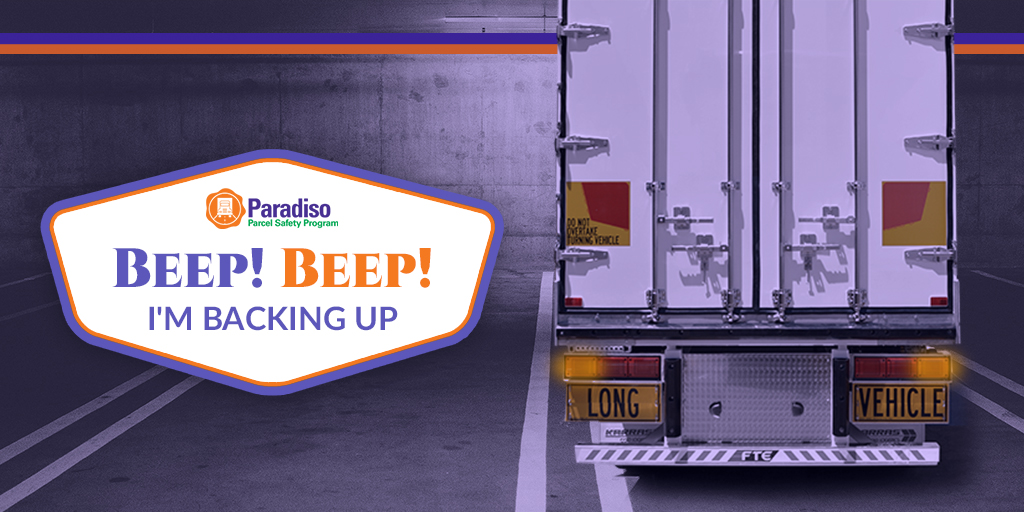BEEP, BEEP! I’m backing up!

For those of you who drive a truck on the job, most of your vehicles are probably equipped with everything that you need to backup safely. If your rearview is obstructed, then you probably know you’re required to have a back-up beeper, or even a team member ready to direct you safely when you need to throw it in reverse. But, what exactly is the importance of these safety precautions? Is there more you should know? The answer is yes, and there are more finite details that you should be aware of. We want to make sure you’re prepared so that you won’t have to face the consequences further down the line.
What does OSHA have to say about it?
“Title 29 CFR 1926.601(b)(4) states:
No employer shall use any motor vehicle equipment having an obstructed view to the rear unless:
(i) The vehicle has a reverse signal alarm audible above the surrounding noise level or:(ii) The vehicle is backed up only when an observer signals that it is safe to do so.”
“Section 1926.602(a)(9)(ii) states:
No employer shall permit earth-moving or compacting equipment which has an obstructed view to the rear to be used in reverse gear unless the equipment has in operation a reverse signal alarm distinguishable from the surrounding noise level or an employee signals that it is safe to do so.”
What does it all mean?
Okay, enough legal mumbo-jumbo… how does this affect those of us who are driving a truck on a day-to-day basis for work? Well, it means a few things. First and foremost, OSHA requirements have been put in place to ensure that your vehicle is safe, not only for yourself but for those around you. As we stated earlier, if you can’t see behind you while going in reverse, you absolutely must have a backup beeper on your truck or a member of your staff directing you safely to your destination. That isn’t the end of the regulations, though; if your beeper is not loud enough for everyone in the nearby vicinity to hear it over any other surrounding noise, you are at risk. OSHA doesn’t have the ability to pre-approve specific products or beepers or deem them “safe” because they really don’t know what kind of environment you will be working in or how aware your surroundings will be of the fact that you can’t see behind your truck. Play it safe, use caution and common sense, and be sure you are absolutely positive that your surroundings are aware that you are moving before it’s too late.
What does the community have to say about the matter?
After taking a look at a public forum that discussed the matter of using back-up beepers on trucks, we can see there is a bit of a disagreement on the matter.
“Can we stop the loud-beep on backing up? As such, as we all know, the sound is really piercing. And more to the point, it travels, often for miles. It’s a major noise pollution anywhere near any work site. I presume part of the problem as well as workers wearing hearing protection need it even louder.”
The answer should be an obvious “no,” we simply cannot stop the loud beep on backing up vehicles. This post had one angry mother up in arms.
“Yeah – and you really don’t care about children.”
It’s a matter none of us should ever have to think about, but run-overs can occur if you didn’t ensure that your vehicle is 100% safe. Let’s stick to the guidelines that OSHA has provided, and use common sense and reason to determine if our trucks are absolutely safe. Otherwise, there could be consequences, such as liabilities, legal fees, and/or astronomical lawsuits that you and your company probably cannot afford. Also, if you’re looking to be on the safe side, give us a call, and we can make sure you’re covered with a Connecticut liability insurance policy that will have your back if you ever have to cross that bridge.







